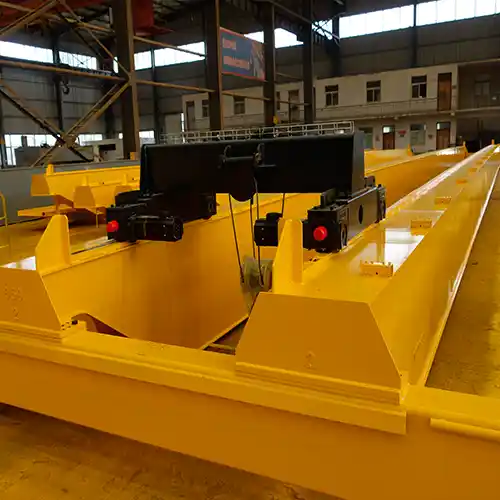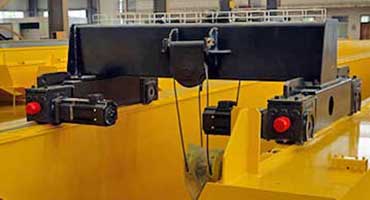Overhead Crane Hoists: Electric Hoist & Manual Hoist for Single & Double Girder Crane
Overhead crane hoists for sale. Custom electric hoists & manual hoists for single girder overhead cranes & double girder overhead cranes 1 ton -80 ton. Check now.
Category: Overhead Hoist
Your Trusted Overhead Hoist Crane Manufacturer & Supplier
Overhead Crane Hoists: Electric Hoist & Manual Hoist for Single / Double Girder Overhead Cranes
Overhead crane hoists are the unsung heroes of countless industries, silently performing the heavy lifting required to keep the wheels of production turning smoothly. In this comprehensive guide, we will embark on a journey to explore every facet of these remarkable machines, from their fundamental definitions to their pivotal roles in diverse industrial landscapes.
Overview of Overhead Crane Hoists
At its core, an overhead crane hoist is a mechanical device designed to lift and lower heavy loads. These loads can vary from raw materials in manufacturing plants to entire sections of bridges on construction sites. What sets overhead crane hoists apart is their ability to perform these lifting operations with remarkable precision and efficiency.
Definition and Purpose
An overhead crane hoist typically consists of a hoisting mechanism, which can be electric or manual, and a trolley system that traverses along an overhead beam. The hoisting mechanism may employ chains or wire ropes to lift loads, and it is often equipped with hooks, attachments, or pallet lifters to secure the items being moved.
The primary purpose of overhead crane hoists is to simplify the movement and positioning of heavy objects that would be otherwise impractical or impossible to handle manually. They serve as the workhorses of industries such as manufacturing, construction, and logistics, where the efficient transfer of heavy materials is essential for productivity.
Importance in Various Industries
The significance of overhead crane hoists transcends industries, impacting sectors as diverse as:
- Manufacturing: In manufacturing facilities, overhead crane hoists are integral to the assembly process, enabling the precise placement of components and products on assembly lines.
- Construction: On construction sites, these hoists are used to lift and position structural elements, heavy machinery, and construction materials with precision and safety.
- Warehousing and Logistics: Warehouses and distribution centers rely on overhead crane hoists to move pallets, containers, and inventory efficiently, optimizing storage and order fulfillment.
- Aerospace and Automotive: These industries demand meticulous precision, making overhead crane hoists indispensable for positioning aircraft components, engines, and vehicles during assembly.
- Heavy Engineering: Overhead crane hoists are essential in heavy engineering sectors, such as shipyards and steel mills, where massive loads need to be moved and manipulated.
As we venture deeper into this guide, we will explore the various types of overhead crane hoists, their components, safety considerations, and the critical role they play in modern industrial operations. Whether you are an industry professional seeking to optimize your material handling processes or simply curious about the machinery that shapes our world, join us on this journey to unlock the secrets of overhead crane hoists.
Types of Overhead Crane Hoists
A. Electric Hoists
Electric hoists stand as the workhorses of many industrial settings, offering precision, power, and efficiency in handling heavy loads. In this section, we will delve into the world of electric hoists, understanding how they work, their diverse applications, key components, and the crucial aspect of maintenance and repair.
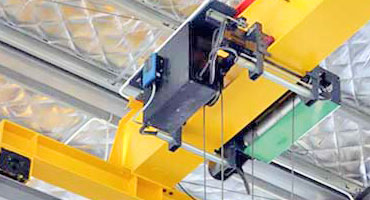
European style wire rope electric overhead crane hoist
FEM wire rope crane hoist specifications: Capacity: 0.25 ton -50 ton,Ask for electric wire rope hoist price.

Chinese style overhead crane electric wire rope hoist
Chinese style electric crane hoist specifications: Capacity: 0.25 ton -80 ton,, Ask for Chinese type electric hoist price.
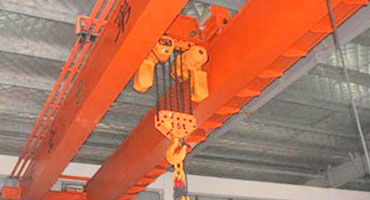
Overhead crane electric chain hoist
Electric chain hoist specifications: Capacity: 0.25 ton -50 ton,, Ask for electric chain hoist price.

Low headroom overhead crane hoist
Low headroom hoist specifications: Capacity: 500kg - 80 ton, Ask for low headroom crane hoist price.
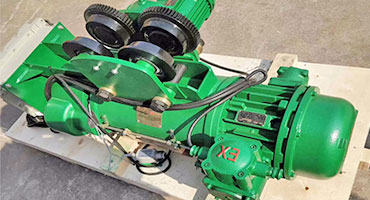
Explosion proof overhead crane hoist
Explosion proof hoist specifications: Capacity: 500kg ton- 50 ton, Ask for explosion proof hoist price.
Electric Hoists Explained
- How They Work: Electric hoists are powered by electricity, providing controlled lifting and lowering capabilities. They operate via an electric motor that drives a drum or a winch to raise and lower the load. The operator can control the movement using a wired pendant or a remote control, ensuring precise positioning.
- Applications and Advantages: Electric hoists find applications in a wide array of industries due to their versatility and reliability. They are commonly used in manufacturing plants for assembly, in construction for lifting heavy materials, and in warehouses for efficient material handling. The advantages of electric hoists include:
- Precision: Electric hoists offer precise control over load movement, making them suitable for delicate tasks that require exact positioning.
- Efficiency: They are known for their efficiency in lifting and lowering loads, contributing to improved productivity.
- Safety: Electric hoists often come with safety features like overload protection and emergency stop functions, enhancing workplace safety.
Key Components of Electric Hoists
- Overhead Crane Winch: The overhead crane winch is a critical component of electric hoists. It consists of a drum or a winch drum, which is a cylindrical spool that stores the lifting medium, whether it's a wire rope or a chain. The winch is responsible for raising and lowering the load.
- Overhead Chain Hoist: Electric hoists may utilize a chain as the lifting medium. Chain hoists are robust and well-suited for heavy-duty lifting tasks. They consist of a chain drum, load chain, and chain guides, all working in tandem to safely lift and lower loads.
Maintenance and Repair of Electric Hoists
While electric hoists are known for their reliability, they require regular maintenance to ensure optimal performance and safety. Here are some key considerations:
- Finding Overhead Crane Repair Service Near Me: When maintenance or repair is needed, it's essential to find a reputable overhead crane repair service nearby. Prompt service can minimize downtime and keep operations running smoothly.
- Overhead Crane Repair Companies: Numerous specialized companies offer overhead crane repair services. These professionals are equipped with the expertise and tools required to diagnose and fix issues efficiently.
- Common Issues and Solutions: Some common issues with electric hoists include motor problems, electrical malfunctions, and wear and tear on components like ropes or chains. Regular inspections and timely repairs can address these issues, extending the hoist's lifespan and ensuring safety.
Electric hoists represent a versatile and dependable choice for many lifting applications. Understanding their operation, components, and the importance of maintenance and repair is crucial for harnessing their full potential in various industrial settings. In the next section, we will explore another category of hoists - manual hoists.
Manual Hoists
While electric hoists are known for their power and precision, manual hoists offer a different approach to material handling. In this section, we'll take a closer look at manual hoists, their various forms, use cases, and limitations.
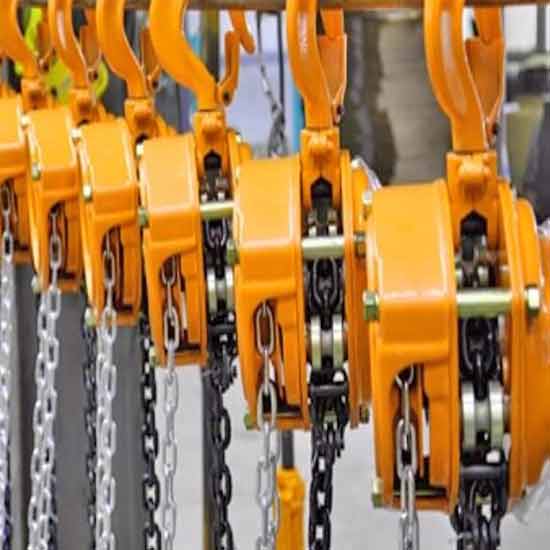
Manual chain block & manual chain hoist, cheap manual hoist
Manual chain block & manual chain hoist for sale. Light,economical & handy manual hoists & hand hoists of 250kg, 1 ton, 1.5 ton , 2 ton , 3 ton , 4 ton , 5 ton , 6 ton,etc.
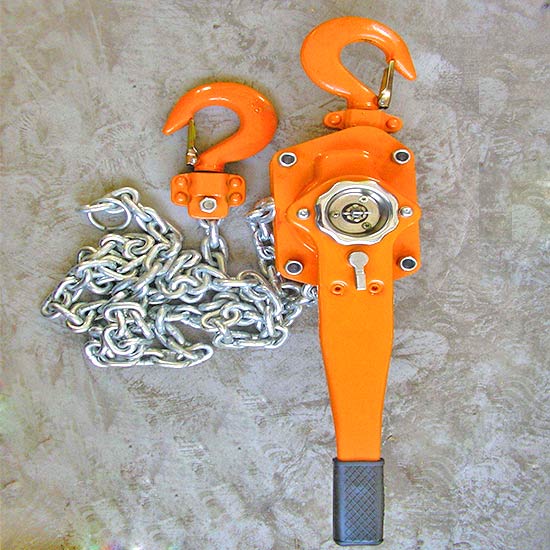
Ratchet lever puller, Ratchet lever block & Ratchet lever hoist
Lever block, lever hoist, lever puller, ratchet hoists, your handy, efficient & economical manual hoists & hand hoists , high quality, durable & long work life.
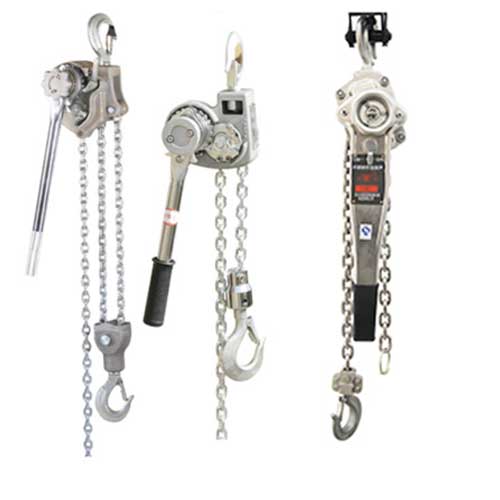
Stainless Steel Lever Hoist & Aluminum Alloy Lever Hoist
Stainless steel lever hoist & aluminum alloy lever hoist, corrosion resistant, dust-proof, anti-static & anti-magnetic. Corrosion resistant chain hoist.
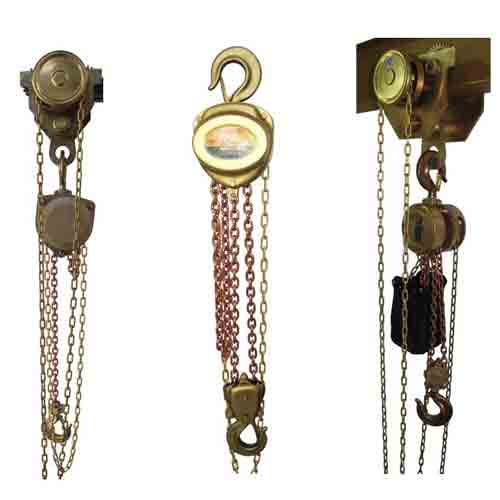
Explosion Proof Chain Block, Spark Proof Manual Chain Block
Explosion proof manual chain block, spark proof & spark proof manual hoist for hazardous application for light duty material handling.Get your manual block.
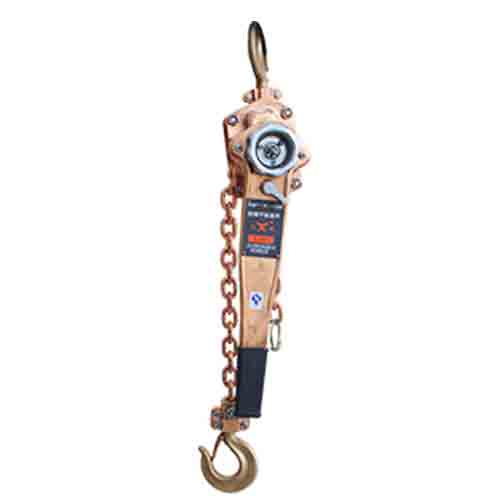
Explosion Proof Lever Hoist & Exproof Manual Lever Hoist
Explosion proof lever hoist, made of H62 brass, aluminum bronze, nickel-plated copper alloy. Explosion proof manual leaver hoist for sale. Check now.
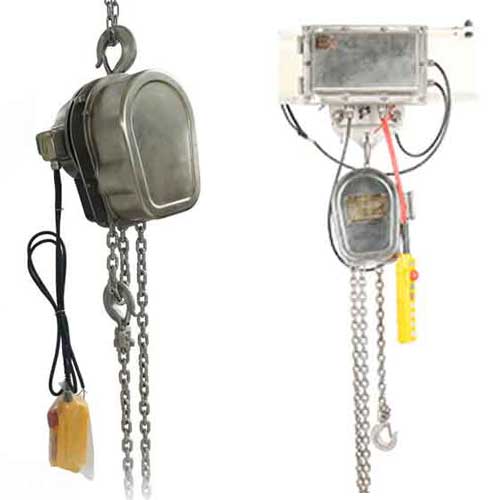
Stainless Steel Electric Chain Hoist for Sale | Anti -corrosion
Stainless steel electric chain hoists for sale, anti- corrosion electric hoist for oil & gas field, clean room, chemical industry, farming, & sewage, etc.
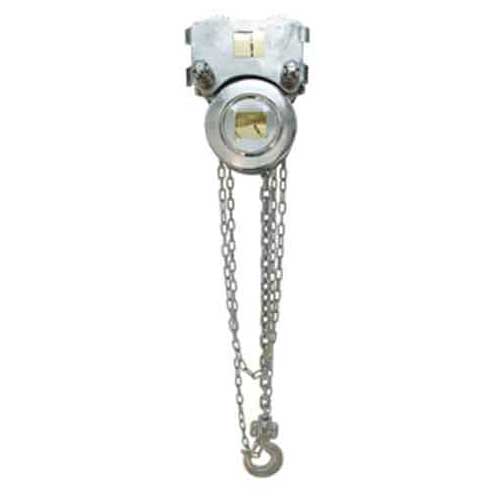
Low Headroom Stainless Steel Chain Hoist for Better Hook Height
Low headroom stainless steel chain hoist- low headroom chain block & low headroom trolley conbination, compact hoist design for better hook height.Click!
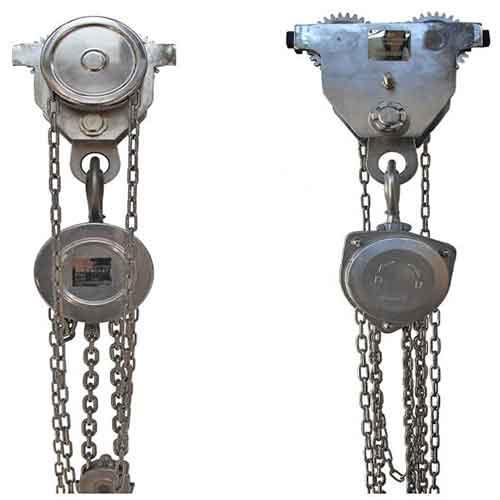
Stainless Steel Chain Hoist & Stainless Steel Chain Block
Stainless steel chain hoist & chain block with high safety,reliability, easy maintenance, high mechanical efficiency, light weight & easy manual handling.
Manual Hoists: A Manual Approach
Manual hoists are straightforward and dependable tools that require the physical effort of an operator to lift and lower loads. They come in various forms, with the two most common being hand-operated hoists and overhead crane hooks.
- Hand-Operated Hoists: These hoists are simple and robust, featuring a hand chain or lever that an operator manually operates to lift or lower the load. Hand-operated hoists are often favored for their reliability and suitability for various applications.
- Overhead Crane Hooks: Overhead crane hooks are a fundamental part of manual hoisting systems. They are designed to securely attach to loads and facilitate their movement. Hooks come in different shapes and sizes, depending on the type of load they are meant to lift.
Use Cases and Limitations
- When to Choose Manual Hoists: Manual hoists are an excellent choice in situations where power sources are limited or unavailable. Some common use cases include:
- Remote or Outdoor Locations: In remote areas or outdoor settings, where electricity may not be readily accessible, manual hoists provide a practical solution.
- Light to Moderate Loads: Manual hoists are well-suited for lifting light to moderate loads. They are commonly used in maintenance and repair tasks, as well as in smaller-scale manufacturing operations.
- Simplicity and Portability: Their simplicity and portability make manual hoists valuable tools for quick and uncomplicated lifting tasks, especially in confined spaces.
- Overhead Crane Pallet Lifter: An overhead crane pallet lifter is a type of manual hoist designed specifically for lifting and moving pallets or skids. It typically features a set of forks that slide under the pallet, allowing for easy and controlled lifting and transport.
Limitations of Manual Hoists
Despite their versatility, manual hoists have limitations:
- Limited Load Capacity: Manual hoists are not suitable for lifting extremely heavy loads. Their load capacity is limited by the physical capabilities of the operator.
- Slower Operation: Manual hoists require more time and effort compared to their electric counterparts, making them less efficient for high-volume operations.
- Operator Fatigue: Prolonged use of manual hoists can lead to operator fatigue, impacting productivity and safety.
In conclusion, manual hoists offer a reliable and practical solution for various lifting tasks, especially in scenarios where electricity is not available or for lighter loads. Understanding their strengths and limitations is crucial for making informed decisions when choosing the right hoist for a specific application. In the next section, we will explore the intricate world of overhead crane trolley systems.
Types of overhead crane hoists based on different classifications
Overhead crane hoists can be classified based on various criteria, including their lifting mechanism, configuration, and application. Here are the main types of overhead crane hoists based on these different classifications, along with their features and applications:
Lifting Mechanism:
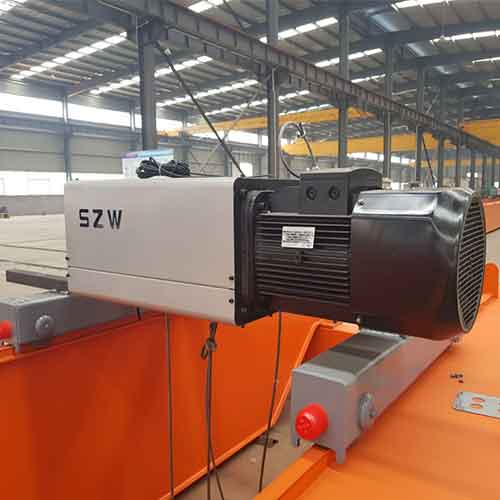
Features:
- Electrically powered using an electric motor.
- Precise control over lifting and lowering operations.
- Suitable for a wide range of load capacities.
Applications:
- Manufacturing and assembly lines.
- Warehouses and distribution centers.
- Construction sites.
- Maintenance and repair tasks.

b. Manual Hoists:
Features:
- Operated by hand using a chain or lever.
- Simplicity and reliability.
- Suitable for lighter loads and situations where power is unavailable.
Applications:
- Small-scale manufacturing.
- Maintenance and repair tasks.
- Remote or outdoor locations with limited power access.
Configuration:
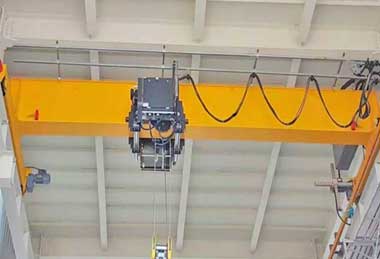
Features:
- Single horizontal beam (girder) supporting the hoist.
- Compact design and cost-effective.
- Suitable for lighter loads.
Applications:
- Small to medium-sized manufacturing facilities.
- Warehouses.
- Maintenance workshops.
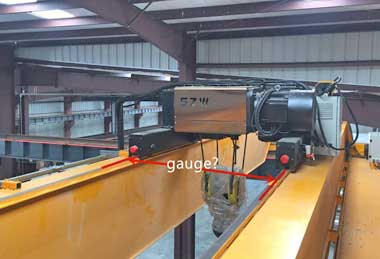
Features:
- Two horizontal beams (girders) for enhanced stability and load capacity.
- Suitable for heavy-duty lifting tasks.
- Greater clearance height for lifting larger loads.
Applications:
- Heavy manufacturing.
- Large-scale construction projects.
- Steel mills and foundries.
Application:
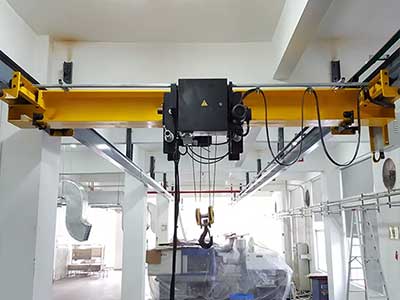
Features:
- Spanning overhead on parallel runways.
- Can move loads in a straight line along the length of the bridge.
- Electric hoists commonly used for precision.
Applications:
- Manufacturing and assembly lines.
- Material handling in warehouses.
- Loading and unloading heavy machinery.
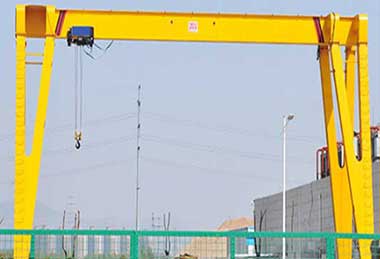
Features:
- Similar to bridge cranes but with supporting legs on both sides.
- Offers greater mobility and flexibility.
- Suitable for outdoor applications.
Applications:
- Shipyards.
- Construction sites.
- Container handling in ports.
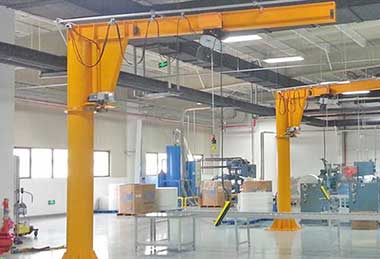
Features:
- Consist of a vertical mast with a horizontal jib arm.
- Provides 360-degree rotation for precise load placement.
- Compact design for localized lifting.
Applications:
- Machine shops.
- Workstations for material handling.
- Loading and unloading trucks.
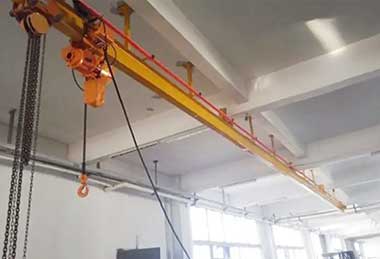
Features:
- Operate on a single fixed beam or track.
- Ideal for moving loads along a predetermined path.
- Efficient for repetitive material handling tasks.
Applications:
- Assembly lines.
- Paint booths.
- Conveying materials within a facility.
These classifications cover the main types of overhead crane hoists based on lifting mechanism, configuration, and application. Each type offers specific features and advantages tailored to different industrial needs, making them versatile tools for material handling in various settings.
Overhead Crane Trolley Systems
To navigate the complex landscape of overhead crane hoists, it's crucial to understand the integral role played by overhead crane trolley systems. In this section, we will delve into the workings of these systems, explore their key components, and examine their various configurations and types.
Understanding Overhead Crane Trolley Systems
Components and Functionality: An overhead crane trolley system is a critical component of overhead crane hoists. It serves as the mechanism responsible for horizontally moving the load along the length of the crane's beam. A typical overhead crane trolley system consists of:
- Trolley Frame: The frame serves as the structural support for the trolley and is designed to traverse along the overhead beam.
- Wheels and Axles: Overhead crane trolley wheels, along with axles, facilitate the movement of the trolley along the beam. These wheels are carefully engineered to ensure smooth and precise travel.
- Drive Mechanism: Depending on the type of crane, the drive mechanism may include motors, gears, and brakes that control the trolley's motion.
Overhead Crane Trolley Wheels: The wheels on the trolley system are essential for ensuring smooth and reliable movement. They are typically made of durable materials like steel or cast iron and are designed to withstand heavy loads and prolonged use. Proper lubrication and maintenance are crucial to extending the life of these wheels and ensuring their efficient operation.
Configurations and Types
Single Girder vs. Double Girder Cranes: Overhead crane trolley systems are often categorized based on the configuration of the crane's girders, which are the horizontal beams that support the trolley.
- Single Girder Cranes: These cranes have a single horizontal beam, making them more compact and cost-effective. They are suitable for lighter loads and applications where space is limited.
- Double Girder Cranes: Double girder cranes have two horizontal beams, providing greater stability and load capacity. They are ideal for heavy-duty applications and tasks that require lifting very heavy loads.
Role in Load Distribution: The overhead crane trolley system plays a crucial role in distributing the load's weight evenly along the length of the crane beam. This even distribution of weight helps maintain balance and stability during lifting and movement, reducing the risk of accidents.
Understanding the components and operation of overhead crane trolley systems is essential for safe and efficient material handling in industrial settings. Whether it's a single girder crane for smaller loads or a robust double girder crane for heavy-duty applications, the trolley system is the unsung hero that ensures loads are moved with precision and reliability. In the next section, we will explore the vital role played by overhead crane beams in supporting hoists and loads.
Overhead Crane Beam: Backbone of the System
As we continue our exploration of overhead crane hoists, it's imperative to shed light on the often-underappreciated yet indispensable component - the overhead crane beam. In this section, we will delve into the critical role played by overhead crane beams, understand their structural importance, and explore various types and selection considerations.
The Role of Overhead Crane Beams
- Structural Support: The overhead crane beam serves as the backbone of the entire crane system. Its primary function is to provide structural support and stability to the crane, ensuring that it can safely lift and transport heavy loads. These beams are engineered to withstand significant weight and stress, making them vital for maintaining the crane's structural integrity.
- Attachment Point for Hoists: Overhead crane beams serve as attachment points for hoists and trolley systems. They are designed with secure mounting mechanisms that allow hoists to be safely affixed to the beam. This attachment point ensures that the hoist can move along the length of the beam, allowing for precise positioning of the load.
Types of Overhead Crane Beams
Box Beams vs. I-Beams:
Overhead crane beams come in two common forms: box beams and I-beams, each with its own set of characteristics.
- Box Beams: Box beams are hollow in the center, forming a rectangular shape. They are known for their durability and resistance to bending. Box beams are often used in heavy-duty applications where structural integrity is paramount.
- I-Beams: I-beams have a distinct "I" shape with a vertical web and horizontal flanges. They are lighter than box beams and are typically used in applications where weight savings are important, or where the load capacity does not require the extra strength of a box beam.
Selection Considerations:
Choosing the right type of overhead crane beam is essential to ensure safe and efficient material handling. Considerations include:
- Load Capacity: Select a beam that can safely handle the maximum load weight you anticipate.
- Span Length: The distance the beam needs to span without support is a crucial factor in beam selection.
- Environmental Factors: Consider the environment in which the crane will operate. For corrosive or harsh environments, corrosion-resistant coatings may be necessary.
- Hoist Compatibility: Ensure that the chosen beam is compatible with the hoist and trolley system you plan to use.
- Regulatory Compliance: Adhere to safety and engineering standards relevant to your industry when selecting overhead crane beams.
The overhead crane beam is not just a structural element; it is a critical component that directly impacts the crane's performance, safety, and longevity. Whether you opt for a robust box beam or a versatile I-beam, understanding the role of these beams and selecting the right one is pivotal in the success of your material handling operations. In the upcoming section, we will emphasize the importance of safety and maintenance in overhead crane hoist operations.
Safety and Maintenance
Safety and maintenance are the cornerstones of reliable overhead crane hoist operations. In this section, we will delve into the critical aspects of ensuring safety during hoist operations and maintaining the equipment for longevity.
Ensuring Safety in Overhead Crane Hoist Operations
Importance of Safety Features: Safety is paramount in overhead crane hoist operations, where heavy loads are lifted and transported. Modern hoists come equipped with a range of safety features, including:
- Overload Protection: Overload protection mechanisms prevent hoists from lifting loads beyond their rated capacity, reducing the risk of accidents and equipment damage.
- Emergency Stop: Emergency stop buttons enable immediate halting of hoist operations in case of unforeseen emergencies or hazards.
- Limit Switches: Limit switches set upper and lower travel limits, preventing the trolley from moving beyond its intended path.
- Anti-Sway Control: Anti-sway technology minimizes load sway during movement, enhancing stability and control.
Compliance with Safety Standards: Adherence to safety standards and regulations is imperative in overhead crane hoist operations. Various organizations and standards, such as OSHA (Occupational Safety and Health Administration), ANSI (American National Standards Institute), and CMAA (Crane Manufacturers Association of America), provide guidelines and regulations to ensure safe crane usage. Compliance with these standards not only promotes safety but also helps avoid potential legal issues.
Regular Maintenance for Longevity
Overhead Crane Repair and Maintenance: Routine maintenance is essential to extend the lifespan of overhead crane hoists and ensure their safe and efficient operation. Maintenance tasks include:
- Inspection of Components: Regularly inspect hoist components, such as chains, ropes, hooks, and brakes, for signs of wear, damage, or malfunction.
- Lubrication: Proper lubrication of moving parts minimizes friction, reduces wear and tear, and ensures smooth hoist operation.
- Cleaning: Keep the hoist and its surroundings clean to prevent the accumulation of debris, which can interfere with hoist functionality.
Finding Reliable Overhead Crane Repair Companies Near Me: When maintenance or repairs are needed, it's crucial to locate reputable overhead crane repair companies in your vicinity. Timely and professional service can minimize downtime and ensure that your hoists remain in optimal condition.
DIY Checks for Overhead Crane Hoists
In addition to professional maintenance, conducting regular DIY checks can help identify issues early and prevent potential problems. These checks may include:
- Visual Inspections: Look for visible signs of wear, damage, or misalignment in hoist components. Pay attention to the condition of cables, hooks, and the trolley system.
- Lubrication and Cleaning: Ensure that all moving parts are adequately lubricated and free from debris. Clean the hoist and surrounding areas regularly to maintain a safe and clean working environment.
Safety and maintenance are not just best practices; they are essential prerequisites for safe and efficient overhead crane hoist operations. By prioritizing safety features, complying with regulations, and conducting regular maintenance checks, you can ensure that your hoist systems function reliably and securely. In the following section, we will explore the various safety features and inspections commonly associated with overhead crane hoists.
Integration of Overhead Crane and Hoist
The seamless integration of overhead crane systems and hoists is fundamental to their effective and efficient operation. In this section, we will explore the symbiotic relationship between overhead cranes and hoists, emphasizing their compatibility and customization for specific applications.
The Synergy of Overhead Crane and Hoist
- Overhead Crane & Hoist Compatibility: Overhead cranes and hoists are designed to work in harmony, complementing each other's capabilities. The synergy between these two components is essential for successful material handling in various industries. Key aspects of their compatibility include:
- Load Capacity Matching: Overhead cranes and hoists are selected and configured to handle specific load capacities. Ensuring that the hoist's capacity aligns with the crane's capacity is critical for safe operations.
- Control Integration: Modern overhead crane and hoist systems often feature integrated controls. This integration enables operators to coordinate the crane's movement with the hoist's lifting and lowering functions, facilitating precise load positioning.
- Trolley Systems: Overhead crane trolley systems are designed to accommodate hoists securely, ensuring they can traverse the length of the crane beam without complications.
Customization for Specific Applications:
Overhead crane hoists are not one-size-fits-all solutions. They can be customized to suit the unique requirements of different industries and applications. Customization options include:
- Attachment Points: Hoists can be equipped with various types of hooks, attachments, or pallet lifters to secure and lift specific loads safely.
- Speed and Control: Depending on the application, hoists can be configured for different lifting speeds and control sensitivities to optimize efficiency and safety.
- Environmental Considerations: Hoists can be adapted for use in challenging environments, such as clean rooms or hazardous locations, by incorporating specialized features and materials.
- Load Handling Equipment: Accessories like spreader bars, magnets, or vacuum lifters can be added to hoists to expand their capabilities for handling various types of loads.
The integration of overhead crane and hoist systems is a dynamic process that requires careful consideration of load requirements, operational needs, and safety concerns. Customizing these systems for specific applications enhances their performance and ensures that they align perfectly with the demands of the industry.
As we wrap up our exploration of the integration of overhead crane and hoist systems, we will move on to discussing the practical aspects of choosing the right overhead crane hoist to meet your specific needs in the next section.
Conclusion
As we conclude our comprehensive guide to overhead crane hoists, let's recap the key takeaways and the essential points we've explored throughout this journey.
Key Takeaways
- Overhead crane hoists are essential tools in industries ranging from manufacturing to construction and logistics, enabling the efficient lifting and movement of heavy loads.
- Two primary types of overhead crane hoists are electric hoists, known for their precision and power, and manual hoists, offering simplicity and versatility.
- Overhead crane trolley systems play a pivotal role in load movement, providing the necessary horizontal mobility for hoists.
- Overhead crane beams serve as the structural backbone of the system, supporting hoists and loads while maintaining structural integrity.
- Safety features, compliance with standards, and regular maintenance are critical to ensuring safe and efficient hoist operations.
- The integration of overhead cranes and hoists is essential for their synergy, and customization allows tailoring hoists to specific applications.
- Choosing the right overhead crane hoist involves considerations such as load capacity, control, customization, and environmental factors.
Emphasis on Safety and Regular Maintenance
Throughout this guide, we've underscored the paramount importance of safety in overhead crane hoist operations. Safety features, adherence to standards, and proactive maintenance are the cornerstones of incident prevention and operational reliability. Ensuring that hoists are well-maintained and operated by trained personnel is non-negotiable.
Versatile Role of Overhead Crane Hoists
Overhead crane hoists are not just industrial tools; they are enablers of progress and efficiency. Their versatility spans industries and applications, from lifting and positioning components on assembly lines to moving heavy materials on construction sites and optimizing warehouse logistics.
Whether you are an industry professional seeking to enhance your material handling processes or someone with a curious mind exploring the intricate world of overhead crane hoists, this guide has provided insights into the critical components, safety considerations, and practical applications of these remarkable machines.
Main Projects
Related Products

Supplied three grab bucket crane kits to Indonesia, enhancing garbage handling efficiency with high load capacity and reliable performance.
Free consultation to Confirm Parameters & Specifications and Get
Latest Crane Price & Crane Rate.
- Types of overhead cranes : _______?
- Optional: Overhead travelling crane, goliath gantry crane,Slewing jib crane, Single girder or double girder crane,small portable crane or kbk crane, etc.
- Capacity of overhead crane: _______?
- Optional: 0.25ton, 0.5 ton, 1 ton, 2 ton, 3ton, 5 ton, 10 ton,15ton, 20ton, 25 ton, 30ton,35ton, up to 550ton, etc.
- Crane span & lifting height : _______?
- Crane travelling length : _____?
- Control of overhead crane:_______?
- Optional: pendant/ remote/cabin control
- Voltage supply of overhead crane:_____?
- Eg,: 380V50/60HZ,3Phase or others,etc.
- Application/usage of crane:_______?
- Eg,: Steel mill, ,injection mold, cement,stone, concrete,granite, general manufacturing, etc.
Just leave a message via the contact form and our hoist and crane engineer will contact you with in 24working hours.
Get In Touch
